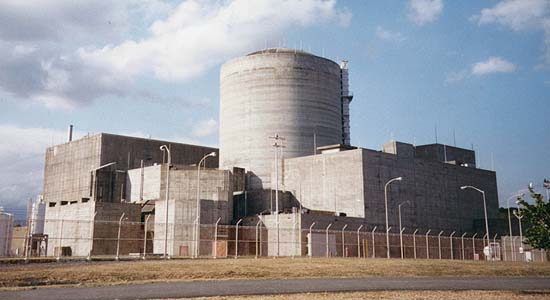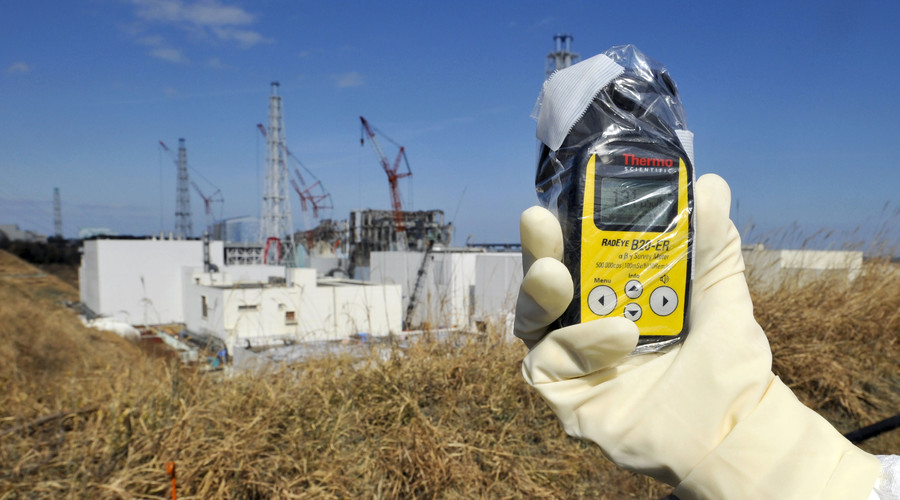QUEZON City, Philippines (September 27) – The Bataan Nuclear Power Plant is an atomic power plant, finished yet never energized. It is located on the Bataan Peninsula, 100 kilometers west of Manila. It is situated on a 3.57 square kilometer government reservation at Napot Point in Morong, Bataan. It was the Philippines’ lone endeavor at building an atomic power plant.

 The Philippine Atomic Project began in 1958 with the founding of the Philippine Atomic Energy Commission or PAEC under Republic Act 2067. Then President Ferdinand Marcos in July 1973 ordered the construction of an atomic power plant. A presidential board of trustees was set up to secure funding for the two 600 megawatt atomic reactors aimed to provide for the energy needs of Luzon.
The Philippine Atomic Project began in 1958 with the founding of the Philippine Atomic Energy Commission or PAEC under Republic Act 2067. Then President Ferdinand Marcos in July 1973 ordered the construction of an atomic power plant. A presidential board of trustees was set up to secure funding for the two 600 megawatt atomic reactors aimed to provide for the energy needs of Luzon.
Then, the Bataan Nuclear Power Plant just stood there.
In December 2015, the International Atomic Energy Agency or IAEA, under the leadership of Yukiya Amano, expressed its willingness to help the Philippines if it ever choose to resvive the BNPP. Be that as it may, the United Nations’ atomic guard dog cleared up that the Philippine government will have the final say on the matter. Amano visited the country to attend the third Nuclear Congress – a multi-sectoral meeting surveying the advancement made by the Philippines in utilizing atomic energy.

The Department of Energy or DOE drafted the nation’s atomic energy arrangement.The National Power Corporation (NAPOCOR) signed a memorandum of agreement with the Korean Electric Power Company or KEPCO to survey the probability of activating the nuclear power plant. According to studies, it would take $1 billion spread over four years or more to reestablish the BNPP. Also, 80% of the plant and its equipment requires upgrading. The remaining 20% must be replaced.
Finally, the House of Representatives’ Committee on Energy endorsed a bill authorizing the restoration of the BNPP.
In a country prone to earthquakes and other catastrophes, fears of a Fukushima repeat cannot be shrugged off.
The tsunami produced by a 9.0 magnitude earthquake in Japan damaged Fukushima’s several reactors and disabled the reactors’ cooling systems, which resulted in the release of radioactive materials.
The Japanese nuclear plant had a peak horizontal ground acceleration of 0.1g. The IAEA requires a minimum of 0.1g peak horizontal ground acceleration “regardless of any lower apparent exposure to seismic hazard.”

The BNPP has a peak acceleration of 0.4g. The NAPOCOR claims it can withstand the greatest tremor projected to hit Luzon. NAPOCOR Asset Preservation Department Manager Mauro Marcelo Jr. added that the nuclear plant is well protected from tsunami.
The Philippine Nuclear Research Institute, on the other hand, is also doing its part. It had accelerated the organization of the BNPP’s administrative needs.
Once a national approach is set up, the BNPP and all consequent atomic power plants in the Philippines will be subject to the administrative procedure.
Now that we know the history of the BNPP and the steps being undertaken by the government, here are some of the advantages if the power plant is allowed to operate:
- 1 kg of of uranium gives energy equal to 3,000 tons of high-grade coal. In other words, atomic power plants require less fuel compared to conventional power plants.
- Atomic power plants don’t emanate green house gasses. Therefore, atomic power plants are more friendly to the environment.
On the other hand, one major disadvantage to consider is that nuclear power plants provide great security risks. Any malfunction can extract grievous toll on the area surrounding the plant.
Taking note of the advantages and the risks, should we activate the Bataan Nuclear Power Plant?
(written by Allyssa Ruiz, edited by Jay Paul Carlos, additional research by Vince Alvin Villarin)








